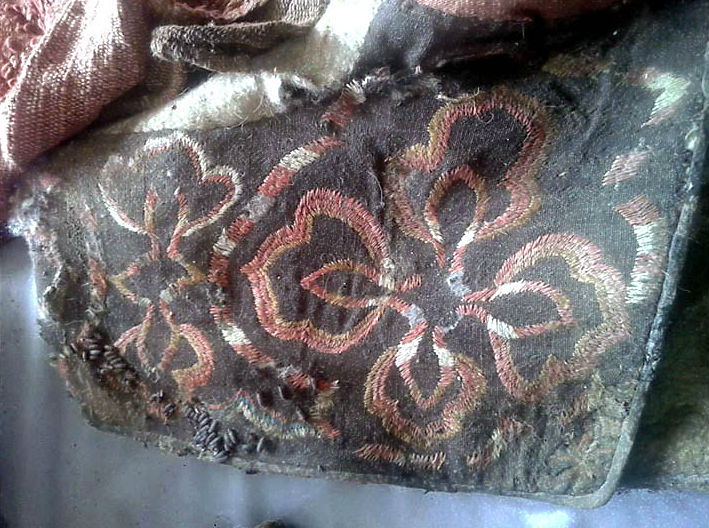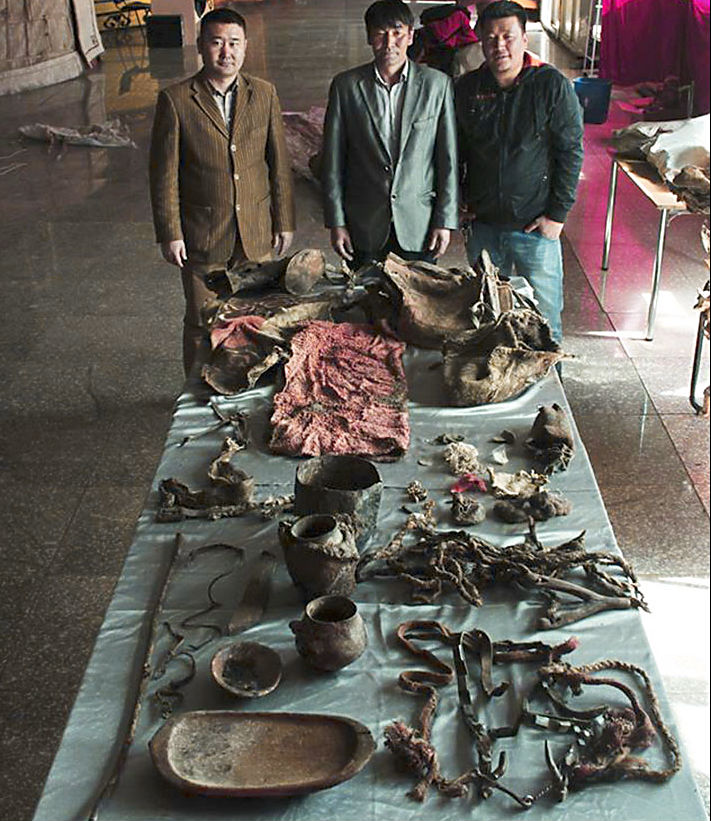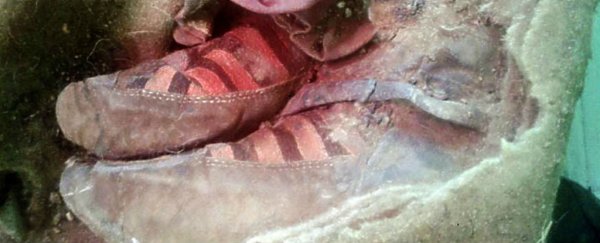Okay, time travel might be a bit of a stretch, but you can't deny that this Mongolian mummy - uncovered in the Altai Mountains of Siberia next to the remains of a horse, a pillow, and a sheep's head - was seriously ahead of her time when it comes to fashion.
It's an awesome discovery, but not just because these incredibly well-preserved belongings give us an unprecedented glimpse into life on the mountains some 1,500 years ago. Archaeologists also suspect that this is one of the first complete burials ever found of a Turkik person - a vast collection of ethnic groups that spanned Central Asia and Siberia during the 6th century BC.
"It is the first complete Turkik burial at least in Mongolia - and probably in all Central Asia," archaeologist B. Sukhbaatar from Khovd Museum in Mongolia told The Siberian Times. "This is a very rare phenomenon. These finds show us the beliefs and rituals of Turkiks."
The mummy, which was found at the bottom of a 3-metre-deep grave at an altitude of about 2,803 metres, is still wrapped in felt, and the next task for Sukhbaatar and his team is to very carefully unravel everything to confirm its gender.
But right now, it's suspected that the remains belonged to a woman, simply because of the fact that they were not buried alongside a bow. As Romanian archaeologist explains in his book about Turkik nomads:
"When a man died, the survivors dug a pit as large as a house, in which they laid the deceased holding in his hand a wooden cup filled with a drink, as well as his belt, bow, and money. … Following that, the dead man's horses were killed, the number of horses sacrificed being an indication of his personal wealth."
Because this mummy was buried with a single horse, the archaeologists suggest that she was likely not from the elite, which means even those of modest wealth could still afford to wear some sick shoes.
 Embroidered bag. Credit: Khovd Museum
Embroidered bag. Credit: Khovd Museum
"We can see clearly that the horse was deliberately sacrificed," Sukhbaatar told The Siberian Times. "It was a mare, between four and eight years old."
The mummy was also buried with four cotton coats, an embroidered saddle and bridle, a clay vase, wooden bowl, trough, iron kettle, pillows, a sheep's head, and a felt travel bag. Inside this pack were sheep parts, goat bones, and small leather bag for the cup.
"An interesting thing we found is that not only sheep wool was used, but also camel wool," says Sukhbaatar. "We can date the burial by the things we have found there, also the type of hat. It gives us a preliminary date of around the 6th century AD."
It's a lot of stuff for one person without much wealth to own, and even 1,500 years later, you can see the incredible amount of work and skill that went into the designs of the clothes and accessories.
It might not be evidence of time travel - just like this ancient 'laptop' is definitely not an ancient laptop - but the fact that the patterns seem eerily familar to us just shows how innate some things are, wherever (or whenever) you are. When it comes to fashion, humans gonna human.
The results of the find have yet to be properly analysed and published, but we should see a more detailed analysis from the team in the coming months.
 What a haul. Credit: Khovd Museum
What a haul. Credit: Khovd Museum
